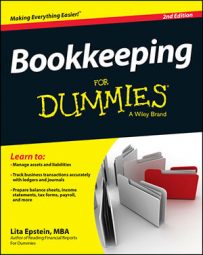Taxes aren’t the only thing you need to worry about when figuring out your state obligations after hiring employees. Every state (except Texas) requires employers to carry workers’ compensation insurance, which covers your employees in case they’re injured on the job. Texas doesn’t require this insurance but permits employees injured on the job to sue their employers in civil court to recoup the costs of injuries.
If an employee gets hurt on the job, workers’ compensation covers costs of lost income, medical expenses, vocational rehabilitation, and, if applicable, death benefits. Each state sets its own rules regarding how much medical coverage you must provide.
If the injury also causes the employee to miss work, the state determines the percentage of the employee’s salary you must pay and how long you pay that amount. If the injury results in the employee’s death, the state also sets the amount you must pay toward funeral expenses and the amount of financial support you must provide the employee’s family.
The state also decides who gets to pick the physician that will care for the injured employee; options are the employer, the employee, the state agency, or a combination of these folks. Most states allow either the employer or the injured employee to choose the physician.
Each state makes up its own rules about how a company must insure itself against employee injuries on the job. Some states create state-based workers’ compensation funds to which all employers must contribute. Other states allow you the option of participating in a state-run insurance program or buying insurance from a private company.
A number of states permit employers to use HMOs, PPOs, or other managed-care providers to handle workers’ claims. If your state doesn’t have a mandatory state pool, you’ll find that shopping around for the best private rates doesn’t help you much. States set the requirements for coverage, and premiums are established by either a national rating bureau called the National Council on Compensation Insurance (NCCI) or a state rating bureau.
You may find lower rates over the long term if your state allows you to buy private workers’ compensation insurance. Many private insurers give discounts to companies with good safety standards in place and few past claims. So the best way to keep your workers’ compensation rates low is to encourage safety and minimize your company’s claims.
Your company’s rates are calculated based on risks identified in two areas:
Classification of the business: These classifications are based on historic rates of risk in different industries. For example, if you operate a business in an industry that historically has a high rate of employee injury, such as a construction business, your base rate for workers’ compensation insurance is higher than that of a company in an industry without a history of frequent employee injury, such as an office that sells insurance.
Classification of the employees: The NCCI publishes classifications of over 700 jobs in a book called the Scopes Manual. Most states use this manual to develop the basis for their classification schedules. For example, businesses that employ most workers at desk jobs pay less in workers’ compensation than businesses with a majority of employees operating heavy machinery because more workers are hurt operating heavy machinery than working at desks.
Be careful how you classify your employees. Many small businesses pay more than needed for workers’ compensation insurance because they misclassify employees. Be sure you understand the classification system and properly classify your employee positions before applying for workers’ compensation insurance. A specialist in selling business insurance can assist you with classification.
When computing insurance premiums for a company, the insurer (whether the state or a private firm) looks at employee classifications and the rate of pay for each employee. For example, consider the position of a secretary who earns $25,000 per year. If that job classification is rated at 29 cents per $100 of income, the workers’ compensation premium for that secretary is $72.50.
Most states allow you to exclude any overtime paid when calculating workers’ compensation premiums. You may also be able to lower your premiums by paying a deductible on claims. A deductible is the amount you would have to pay before the insurance company pays anything. Deductibles can lower your premium by as much as 25 percent, so consider that as well to keep your upfront costs low.

